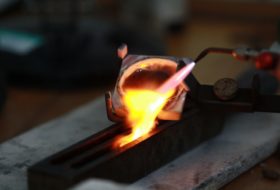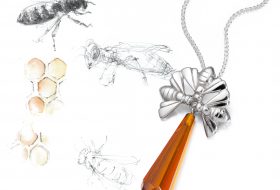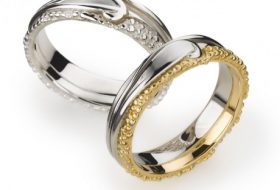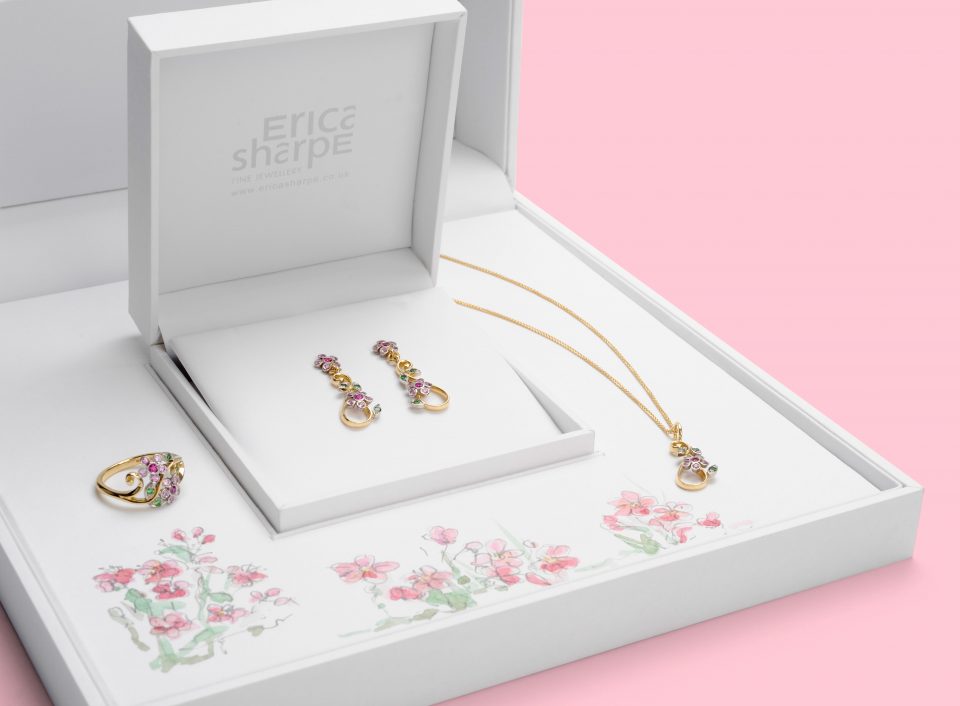Running a jewellery workshop and shop at this time of year is…well… full-on! From September onwards, the jewellery trade hurtles at an ever-quickening pace to get work created, displayed, altered and distributed in time for the big day. To add to the stress there’s the inevitable postal strike, winter illness, bad weather, bad temper and unforeseeable technical malfunctions (more of that one later!).
As well as customer care, shop display, promotion, and making sure our Santa soap dispenser is topped up, my practical jewellery making enters the ‘flat-out’ zone.
I had a very traditional fine jewellery-making training, and the types of hand-tools I use are ones that have been around for centuries. Piercing saw, needle files, pliers and snips – they would all be familiar to a jeweller working a few hundred years ago.
I’m sure every jeweller has their favourite tools. Like old friends, they are always there for you, constant and comfortable. For 20 years or so, I coveted a particular leather hide mallet. Hide is forgiving on the soft precious metals and ideal for forming gold and silver around ring mandrels without bruising and marking. Over the years this mallet had changed shape with daily bashing, so the angles on its surface were perfect for the way that I worked. One day, while I was engrossed in pre-christmas work at the bench, my young dog took a wander round the room and spotted it. What was a hide mallet to a jeweller became an irresistible dog-chew-on-a-stick to my four legged friend. He silently picked it out of the drawer and before I realised what was going on, he ate it!
The jewellers’ hammer is a small light weight hammer, with a tapered head about the size of your little finger. (A watchmaker’s hammer is even more delicate and enviably more elegant in shape) This type of hammer is vital for helping to make ‘cold connections’. Although they sound like the kind of relatives you’d rather not spend Boxing Day with, cold connections are actually methods of joining jewellery components without heating. Moving parts such as hinges, clasps, locks and brooch fittings are classic examples where cold connections (and jeweller’s hammers) are used. A brooch pin is hinged using three pieces of gold or platinum tube, two (outsides) are fixed onto the body of the brooch and the other (inside) soldered on the pin. In this process is where the jewellers hammer comes into its own. With very careful tapping, the ends of the rivet can be splayed out and secured over the edges of the tube hinge. The brooch clasp is created with a safety lock made in a similar way.
It was a particularly time-consuming brooch fitting that I’d just finished the night before my most memorable Christmas nightmare. There were only a few working days left before the Christmas break and after months of very long days, the last of my late night working was done. All the bespoke jewellery was boxed and wrapped, customers had been phoned and were on their way – some of them from quite a distance. With huge relief and satisfaction I packed the safe and slammed the door shut. Everything was under control and I could relax at last. The next morning I came in and opened up the shop. In anticipation for the first collection, I went to open the safe but nothing moved! Unbelievably, the lock had failed (quite possibly a cold connection) and the door was stuck very firmly shut! I felt the blood drain from my head, how was I going to explain that the work was ready, but not available? And if I managed to explain it – would anyone believe me? There was hope – I called my safe engineers, surely they would be able to sort things out. A young lad answered the phone and I explained the problem. ’Oh yes, that’s absolutely fine, Dave’s the one to get that open for you.’ For a sweet moment, relief flooded over me, until he uttered, ‘I’ll take your number and he’ll give you a call in the New Year when he’s back from his holiday in Australia!’








